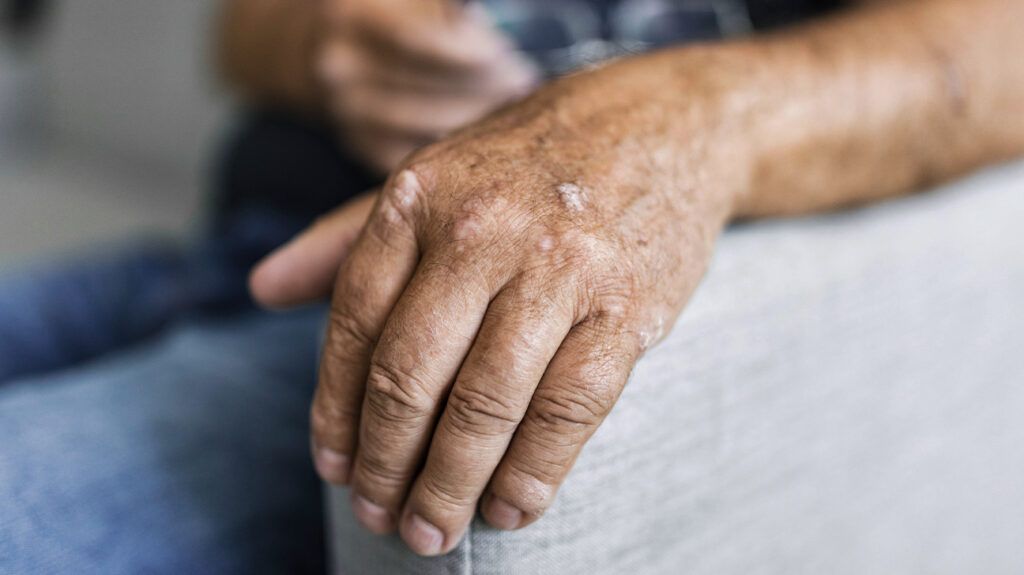Psoriatic arthritis (PsA) can cause tenderness and inflammation of the joints. It often occurs in people with psoriasis and is not contagious. PsA can also affect body parts such as the eyes and digestive tract.
PsA is a chronic, inflammatory disease that affects the body’s joints and connections between the tendons, ligaments, and bones. Symptoms include fatigue, swelling around joints, and pain, throbbing, and stiffness in joints.
People with PsA may also experience psoriasis symptoms, including rashes and dry, flaky patches of skin called plaques. Psoriasis is also an inflammatory skin condition.
This article lists 14 quick facts about PsA, including what causes it and who is most likely to develop it.

The symptoms of PsA can be vague or resemble other conditions, such as:
Due to these shared or vague symptoms, doctors may consider other forms of arthritis and inflammatory conditions when making a diagnosis.
Confirming a diagnosis may take several rounds of physical exams and lab tests.
PsA
Chronic inflammation in healthy tissue results in symptoms such as:
- pain
- swelling
- stiffness
Rheumatoid factors (RF) are proteins the immune system produces. They can form complexes with other proteins that can attack healthy cells and tissue.
Doctors can use blood tests to detect RF proteins. However, people with PsA are usually RF-negative.
If a blood test is positive for RF, a doctor may suspect rheumatoid arthritis is causing arthritis symptoms, not PsA.
No single diagnostic test
- Imaging tests: This may include X-rays or MRIs to observe changes in the bones and joints.
- Blood tests: Blood tests, such as sedimentation rate and C-reactive protein, can detect signs of inflammation.
- Skin biopsy: This can help confirm whether a person also has psoriasis.
PsA
People can manage flares with medication and lifestyle strategies until the symptoms return to pre-flare levels.
Having a family member with PsA can increase a person’s chances of developing the condition.
In fact, about
According to a 2021 study,
However, only around
People with psoriasis can develop other types of arthritis, including osteoarthritis. Some may develop rheumatoid arthritis, but this is
Males and females are
Most people receive their diagnosis about
PsA may be hereditary, but it is not contagious. It cannot pass from person to person.
However, outside events may make people predisposed to the condition more likely to develop their first symptoms, including:
- injury
- stress
- illness
When one of these triggers presses the immune system into action, a side effect may be the autoimmune response that causes PsA to develop.
PsA is not limited to commonly affected joints, such as in the hands, feet, arms, or legs. It can also affect the joints of the spine, hips, and shoulders.
Any joint where ligaments and tendons connect to bones is susceptible to arthritis symptoms.
The immune system’s attack on healthy tissue affects more than the joints. People with PsA may also experience symptoms in other body parts, including inflammation of the eye — uveitis — and digestive tract — inflammatory bowel disease.
People with PsA are also
Treating PsA early and aggressively can help reduce the risk of comorbidities.
While there is no cure for PsA, a range of treatments, including over-the-counter and prescription medications, can ease symptoms. Treatment can help:
- slow progression
- reduce flares
- protect joints and tissue from long-term damage
While the effect of PsA can be widespread, with an effective treatment plan, the condition does not have to lead to poor health.
Not every person with PsA will show signs of the condition, such as swollen fingers or discolored, scaly patches on the skin.
Many symptoms of PsA are invisible. This can make the pain and fatigue challenging to explain to others.
Some people find symptom relief with physical activity alongside medication. Gentle exercises that may help improve joint strength, flexibility, and stamina include:
Physical activity may also help
Psoriatic arthritis is a progressive, chronic condition. It is not contagious but may have a hereditary link and worsen due to certain triggers, such as stress or illness.
Early treatment can relieve symptoms and prevent some of the worst complications of the condition, including long-term damage to the joints and organs.
Lifestyle strategies, such as exercising regularly, may also help ease some symptoms and make living with the condition easier.
